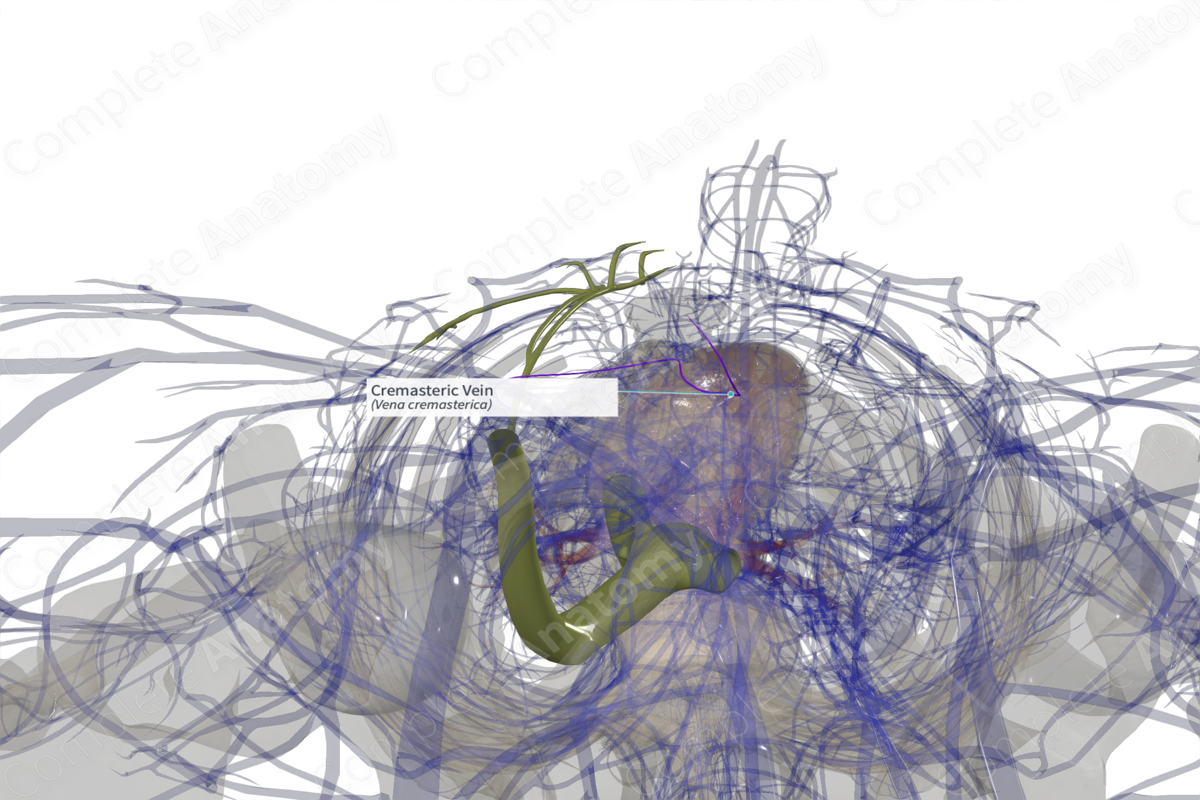
Quick Facts
Origin: Fascia and contents of spermatic cord.
Course: Ascends in the cremasteric fascia entering the abdominal cavity by passing along the inguinal canal. It joins the inferior epigastric vein at the level of the deep inguinal ring.
Tributaries:
Drainage: Spermatic cord.
Origin
The cremasteric vein is formed by small venules that pass from the cremaster layer of the spermatic fascia that contains the cremaster muscle fibers. It also receives contributions from the pampiniform plexus.
Course
The cremasteric vein ascends within the spermatic cord between the internal and external spermatic fascia. It passes through the superficial inguinal ring across the inguinal canal and into the abdominal cavity through the deep inguinal ring. It has a short intraabdominal course before joining the inferior epigastric vein.
The cremasteric vein serves as an alternate pathway for venous return of blood from the testis, which is normally via the testicular vein into the inferior vena cava. Blood may shunt across the pampiniform plexus into the cremasteric vein into the inferior epigastric vein, thus, a potential source of varicocele (Hamada, Esteves and Agarwal, 2015).
Tributaries
There are no named tributaries.
Structures Drained
The cremasteric vein drains the three layers of the spermatic fascia (external, cremasteric and internal), and their contents. These structures make up the spermatic cord.
List of Clinical Correlates
- Varicocele
References
Hamada, A., Esteves, S. C. and Agarwal, A. (2015) Varicocele and Male Infertility: Current Concepts, Controversies and Consensus. Springer International Publishing.
Learn more about this topic from other Elsevier products





